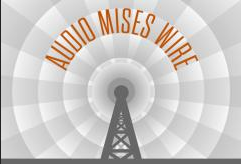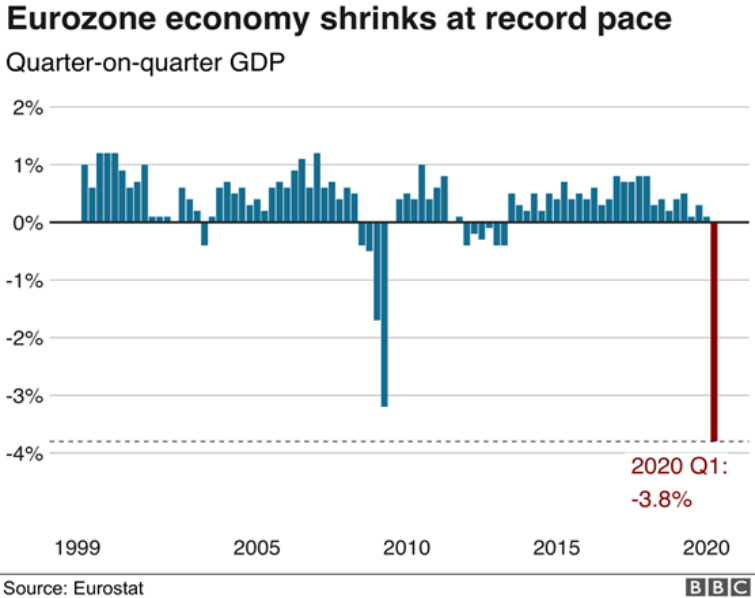Whining and complaining about inequality is a growth industry. Thomas Piketty’s book (or perhaps a large virtue-signaling paperweight), about how the rich are getting richer, achieved bestseller status and is now a movie. Understanding the flaws in the wealth inequality argument is increasingly important, because the communist wing of the Democratic Party is now openly advocating a wealth tax. In this article I will explain why measures of wealth inequality overstate actual inequality in terms of the standard of living of wealthy people relative to the rest. Some of the complaining about inequality focuses on income and some on wealth. I will first focus on why both matter and why looking at only one or the other gives an incomplete picture. Depending on where
Topics:
Robert Blumen considers the following as important: 6b) Mises.org, Featured, newsletter
This could be interesting, too:
Nachrichten Ticker - www.finanzen.ch writes Die Performance der Kryptowährungen in KW 9: Das hat sich bei Bitcoin, Ether & Co. getan
Nachrichten Ticker - www.finanzen.ch writes Wer verbirgt sich hinter der Ethereum-Technologie?
Martin Hartmann writes Eine Analyse nach den Lehren von Milton Friedman
Marc Chandler writes March 2025 Monthly
 Whining and complaining about inequality is a growth industry. Thomas Piketty’s book (or perhaps a large virtue-signaling paperweight), about how the rich are getting richer, achieved bestseller status and is now a movie.
Whining and complaining about inequality is a growth industry. Thomas Piketty’s book (or perhaps a large virtue-signaling paperweight), about how the rich are getting richer, achieved bestseller status and is now a movie.
Understanding the flaws in the wealth inequality argument is increasingly important, because the communist wing of the Democratic Party is now openly advocating a wealth tax. In this article I will explain why measures of wealth inequality overstate actual inequality in terms of the standard of living of wealthy people relative to the rest.
Some of the complaining about inequality focuses on income and some on wealth. I will first focus on why both matter and why looking at only one or the other gives an incomplete picture. Depending on where someone sits on the net worth spectrum, their consumption opportunities will depend to a lesser or greater extent on the balance between their wages, their savings, and their time preference.
Measuring Wealth vs. Measuring Income
Differences in the amount of savings between people gives an incomplete picture, because many people starting out in the workforce lack much savings but have decades of income earning ahead of them during which they may save. By the same token, many older people have accumulated savings that they will rely on either for income or to spend directly as they wind down their participation in the labor market. The consumption of someone without savings must be funded by their wages. For those in the middle (with some wages and some savings), time preference will determine how they balance wages and savings. A younger person might own several income-generating properties but choose to reinvest the rental payments in purchasing additional properties instead of spending, in order to have more income in later years.
As a starting point, I think that those who are concerned about inequality should look at inequality of consumption opportunities. The purpose of all production is to create more goods and services for consumption. The production of intermediate (capital) goods is undertaken, because they can yield more consumption goods down the road. A lot of the measured net worth inequality does not translate into inequality of consumption opportunities, which are inherently far more equally available than the net worth measurements would suggest.
Let’s start with some numbers. CNBC cites a Federal Reserve finding that Americans’ median net worth is about $100,000. Median income for US households in 2018 was near $64,000 in 2019 according to census data. Wikipedia cites Federal Reserve data showing that the wealthiest 1 percent own 40 percent of wealth in the US. A bit of math shows the typical one percenter having sixty-six times the resources of the average person in the lower 99 percent.
What If We Redistributed the Wealth of Billionaires?
Wikipedia notes of the entire net worth of US households and nonprofits that “If divided equally among 124 million U.S. households, this would be $862,000 per family.” The idea that if all of the resources of the 1 percent were distributed more uniformly everyone in the 99 percent could have a much higher standard of living is not true, because there are not enough consumption goods for everyone to have $862,000 in consumption goods.
That sounds like a lot of inequality, but does it translate to a sixty-six-fold higher standard of living? To say that it does is to assume that a given dollar amount of net worth represents an equal dollar amount of consumption possibilities. To take a recent example from the news, Michael Bloomberg‘s net worth is $60 billion. According to this way of thinking, his savings when redistributed would provide $158 for every member of the US population (not, as one mathematically challenged journalist tweeted, $1 million dollars for every American), enough to afford a frost faux fox fur throw blanket while still leaving Bloomberg with about $8 billion to pay his servants and maintain his mansions. Surely enough billions for anyone. If a smaller group were selected to benefit from this redistribution, it would fund a $100,000 house for 600,000 Americans or a brand new car for 1.8 million.
There are two problems with this line of thinking. The first is that net worth totals are dollar values of two different kinds of things—capital goods and consumption goods, of which capital goods make up the larger part. Capital goods can not be alchemically transformed into consumption goods. The second problem is that efforts to turn the savings of some into consumption goods for others will in the end reduce the amount of consumption goods for everyone.
To understand the balance between consumption goods and capital goods, let’s first arrive at a rough estimate of the size of the subcomponents of net worth in America. Federal Reserve economic data calculates $107 trillion in private net worth in the United States. The subcomponents show that individual direct holdings of real estate at $32 trillion are the main contributor to household net worth, although another chart shows that about one-third of that amount is mortgaged (some of which might show up as corporate net worth).
The market value of US corporations is $45 trillion. Government assets (which constitute another $12 trillion) tend to be capital goods such as power generators, roads, ports, and office buildings. Though it is unclear who owns them, let’s add that amount to the capital goods side for a total of $57 trillion of capital goods. Although this accounting is approximate, it makes the point that more than half of all wealth is in the form of capital goods and that nearly all wealth is in capital goods and durable consumer goods (residential real estate). The remaining consumption goods are mostly short duration items such as food and household goods or medium duration items such as cars and appliances.
Thomas E. Woods Jr. and Robert P. Murphy have often made the point on episodes of Contra Krugman that “the rich” do not have all of their assets in cash. They own some combination of nonpublic businesses and financial assets (which are claims on the assets of other businesses). Woods and Murphy have also pointed out that a wealthy person could, if required to do so, sell capital goods for cash and to pay his equality tax levy. However, he could only do so by finding buyers for his businesses or assets who would necessarily be other wealthy people.
Consumption Goods vs. Capital Goods: Why It Matters
The key observation here is that transactions among the rich that change the ownership of existing capital goods leave the amount of consumption goods unchanged. There is a deeper reason why taxing wealth does not create more equality: there simply are not enough consumption goods in existence to provide everyone the opportunities suggested by the richest fraction’s net worth in dollars. Net worth is an aggregated dollar value of market prices of consumption and capital goods—mostly capital goods.
If you had that quantity of dollars, then you could buy an equivalent quantity of consumption goods. But everyone could do this only if all the goods in existence were consumption goods. And this is necessarily not true, because the cash and capital goods that exist are not consumption goods.
I have explained that this way of thinking about inequality overstates the extent to which the wealthy have more consumption possibilities than the average person. By how much? For a wealthy individual the ability to liquidate wealth to respond to an emergency is clearly something worth having. But the rich generally do not take all their possible consumption opportunities at once because of their time preference. They prefer to have the same level of consumption for themselves over the foreseeable future and their children and perhaps subsequent generations rather than consume more.
If you look at the stream of consumption goods that flows from capital goods as a yield, the average wealthy person can earn the average real yield on financial assets, which is a number below the 2–3 percent range after inflation, or somewhere from one-thirtieth to one-fiftieth of the portfolio value. When divided by thirty or fifty, the sixty-six-fold difference implied by net worth comparisons is in the range of 1–2.
Even if you are a peer of Michael Bloomberg, it might be difficult, beyond a point, to find enough consumption goods. Any one family could only realistically own a small number of homes and employ a manageable number of servants, and it’s hard to see the need for more than one or two private jets and, at most, a small handful of professional sports teams. Even the individual who set out to maximize consumption would at some point find that their time became the most scarce factor and that they did not have time to consume more goods and services. At some point consumption would compete with nonconsumption activities such as family life, walking outdoors, or contemplation.
Art Carden argues elsewhere on this site that even measuring differences in consumption spending overstates the extent of actual inequality. An example of this is that I drive a car that has a book value of $2,000. I live in a zip code where many of my neighbors ride in a vehicle which costs easily twenty to thirty times as much, yet my car serves almost as well at transporting me where I want to go as would a far more expensive car. The high-end car is safer, more comfortable, and handles better, but the big difference in life possibilities comes from not having a car to having a car.
Even that has changed through the ubiquitous availability of ride sharing services. Although ride shares are more costly to use on a per-mile basis, they remove the large up-front costs of buying a car, and they remove the fixed costs of insurance and garage space for those who do not drive very often. Ride sharing provides what W.H. Hutt calls the “availability service” of a car without the need for ownership. Ride sharing enables someone with a modest income that does not allow them to afford a car to make targeted purchases of important travel services at an overall lower annual cost. Someone who spends $2,000 per year on ride sharing gets at least 80 percent of the consumption value of a car with an all-in annual cost of ownership which could be more like $10,000 or more when depreciation, parking, a garage, gas, and insurance are included.
Given that the limiting factor is the scarcity of consumption goods, could production be reorganized to have more consumption goods and fewer capital goods to achieve the goal of having the consumption goods more evenly distributed? The answer is no. For the average standard of living to rise, labor must become more productive. As an economy grows, it must become more capital intensive, not less. The amount of capital goods per worker must increase through savings and investment. A larger capital stock increases the productivity of the average worker and therefore raises real wages. As the average worker is able produce more economic value, their real wages increase through either rising nominal wages or supply-driven fall in prices.
The only way to create more consumption goods is to create more capital goods, and as an economy grows, more capital goods must be produced compared to consumption goods. Those capital goods are all owned by someone—whether a small number of already wealthy people, newly wealthy people, or a large number of middle-class investors. It’s not necessarily the case that this will produce more net worth inequality, but it may because the ability to produce capital goods and consumption goods is not evenly distributed—those who are good at it end up owning more. On this point we get some help from our unlikely friend Senator Bernie Sanders, who explained, “If you write a best-selling book, you [too] can be a millionaire.”
The analysis of net worth inequality suggests far more inequality of living standards than actually exists. It implies that all wealth—including capital goods—is available for consumption. A large share of the on-paper net worth inequality comes from stewardship of capital goods. This stewardship is critical, because more consumption requires more capital goods—which probably means more on-paper net worth inequality, because those who are best able to produce the capital goods will end up owning more of them .
Tags: Featured,newsletter








